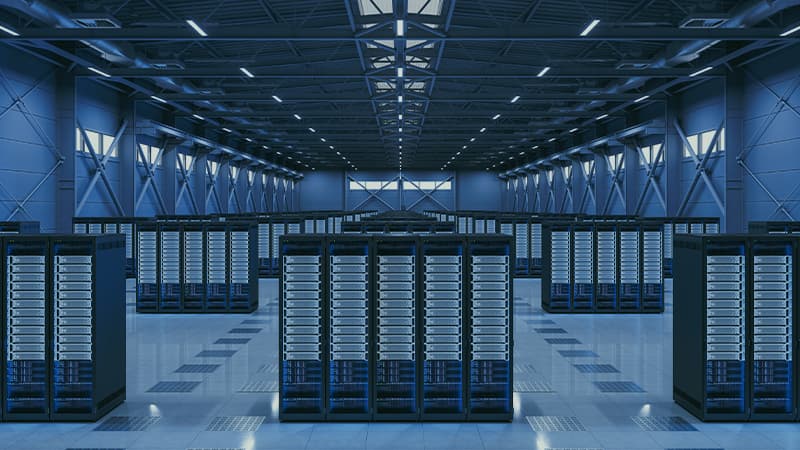November 2025Kayleigh Regan
The Real Cost of Building Hyperscale Data Centers in Australia

Australia’s data center sector is expanding at a record pace. Hyperscale projects are transforming how digital infrastructure is delivered, attracting billions in investment across Sydney, Melbourne, Brisbane, and Perth. Yet as demand grows, so do the challenges. The hyperscale data center build cost continues to rise due to energy constraints, limited land availability, stricter compliance standards, and a shortage of specialized technical skills needed to deliver at scale.
Australia’s expensive data center market
Australia remains one of the highest-cost data-center construction markets in the Asia–Pacific region, driven by rising energy infrastructure expenses, strict regulatory requirements, and growing demand for high-redundancy, high-performance facilities.
Total development costs vary widely depending on site size, energy access, and design complexity. Projects designed for high-density workloads or advanced cooling systems typically sit at the upper end of regional benchmarks, reflecting Australia’s infrastructure and compliance costs.
Key factors driving hyperscale build costs
1. Power infrastructure
Power is the defining constraint in hyperscale delivery in Australia. Developers face significant grid-connection challenges as transmission networks grapple with surging data-center loads. As a result, some operators invest in private substations, on-site generation or long-term renewable supply deals to secure reliable power. These measures are integral to project viability, especially for high-density workloads such as AI, since standard network access cannot always support the load.
2. Land and site conditions
Land suitable for hyperscale development is limited, particularly near high-capacity transmission infrastructure. Globally, data center developers are paying premiums for “powered land” sites already connected to reliable grid supply and fibre routes. Regional cities such as Brisbane, Adelaide, and Perth are attracting new builds due to lower land and energy costs, though these come with longer timelines for connectivity and permitting.
3. Cooling and sustainability
Australia’s climate and resource constraints make cooling a major design and cost factor. Hyperscale facilities increasingly use indirect evaporative and liquid-cooling systems to achieve stronger Power Usage Effectiveness (PUE) performance. These technologies improve long-term efficiency but require higher upfront investment and more advanced commissioning expertise.
Sustainability expectations are also adding to cost. Developers are incorporating renewable-power integration, on-site battery storage, and low-carbon construction materials to meet ESG objectives. These initiatives are now standard among institutional investors and hyperscale operators, positioning sustainability as both a technical and financial requirement.
4. Construction inflation and compliance
Construction costs increased by approximately 5% throughout 2024, driven by rising material prices, ongoing logistics disruptions, and a continued shortage of skilled contractors. At the same time, evolving compliance demands such as the Security of Critical Infrastructure Act, NABERS energy-rating requirements, and sovereign-cloud data mandates are adding layers of complexity that extend project timelines and inflate budgets.
5. Skills that drive delivery
Behind every hyperscale project is a network of highly specialized professionals. The skills needed to plan, build, and commission these facilities directly influence cost and delivery speed. Electrical engineers manage high-voltage distribution, redundant UPS systems, and backup generation. Mechanical engineers focus on precision cooling, air control, and HVAC redundancy to maintain uptime and efficiency. Digital-delivery experts oversee BIM modelling and design coordination across disciplines. Commissioning engineers test performance and reliability to Tier III and IV standards, while sustainability and energy specialists integrate carbon-neutral strategies into every stage of construction.
Kayleigh Regan, Executive Director at LVI Associates, says:
The skills gap in hyperscale construction isn’t about headcount, it’s about capability. Tier IV projects rely on engineers, managers, and commissioning teams who understand the precision, sequencing, and resilience these builds demand. Mechanical, electrical, and controls engineers handle complex redundancy systems, construction managers coordinate tight timelines and exact sequencing, and commissioning, quality, and safety teams maintain reliability through every phase. When that expertise aligns, projects go live faster, safer, and more cost-effectively.
These shortages are driving higher wage costs, longer commissioning phases, and extended delivery timelines. Workforce capability, in summary, has become one of the defining variables in any hyperscale cost model.
Where are hyperscale data center builds growing in Australia?
Australia’s hyperscale data-center market is forecast to reach US$8.5 billion by 2030, growing strongly from about US$6.9 billion in 2025. This expansion is being driven by AI adoption, sovereign data mandates, and cloud infrastructure demand.
Melbourne has become the country’s primary growth hub, accounting for nearly 75% of new capacity thanks to improved energy access, subsea-cable connectivity, and available development land. Sydney remains the largest single market but faces grid-capacity pressure and rising land costs. Brisbane and Perth are emerging as secondary markets, supported by renewable-energy corridors and proximity to Asia-Pacific network routes.
Major hyperscale operators including Google, AWS, and Microsoft, have announced new Australian builds in 2025, reaffirming the country’s status as a global data-infrastructure destination. However, each project faces the same realities: limited power supply, high-value land, tight regulation, and rising demand for advanced engineering skills.
Partner with LVI Associates
LVI Associates partners with developers, operators, and contractors delivering Australia’s next generation of data center. Our consultants connect organisations with the engineering and project talent needed to plan, build, and commission hyperscale and colocation facilities nationwide.
We recruit across all critical disciplines:
- Electrical engineering – high-voltage systems, UPS, power distribution, and redundancy design
- Mechanical design – precision cooling, HVAC optimisation, and air-control systems
- Project management – scheduling, procurement, and delivery coordination for Tier III and IV builds
- Sustainability and energy – carbon-neutral design, renewable integration, and efficiency modelling
If you’re expanding your delivery team or need niche engineering capability for an upcoming data-center project, contact LVI Associates to access Australia’s most connected network of data-center professionals.
Speak to our team today to secure the skills that power large-scale digital infrastructure.


